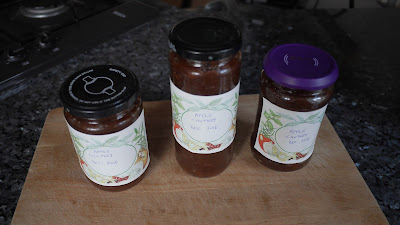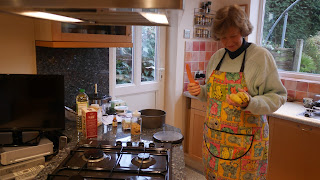This may
seem a doddle to most of you, but so far it’s always been Peter who uses the
satnav and does the vast bulk of the driving.
I felt it was high time I got to grips with both, especially now that we
have a car with a built-in satnav.
Previously it’s been a source of some friction, as our old Garmin packed
up years ago and Peter was very reluctant to replace it. After numerous failed attempts to use an app
on his phone to get us from a to b, I researched options for alternatives to
Garmin – which he’d never been happy with – and found that none of them had
particularly good reviews. We were still
floundering with his phone and arriving late for lunches, dinners etc when the
replacement of our car solved the problem.
Now all I had to do was learn how to use the new satnav.
I started
by reading the instruction manual, which seemed reasonably clear. Then it was time to settle down in the car
and try entering destinations, flagging up favourites and deciding which
features I was likely to want to use.
The weather was bitterly cold so I had to leave the engine running for a
while to provide some warmth. I didn’t
expect to be there all that long but thought I should explain to our neighbour,
Jane, that she needn’t worry if she saw me apparently slumped over the
wheel. She very kindly offered the loan
of her teenage son, who would be able to sort it out for me within
minutes. Tempting, but I wanted to learn
how to do it myself. Besides, how
difficult could it be?
Half an
hour later, I was still trying to work out how to switch off the radio while
leaving the satnav live and audible. Eventually
I was able to progress onto programming our home address, which was easy. The next step was to add various addresses of
friends who live some distance away, in Sussex and East Anglia.
According to the instructions, it was
essential to rename each of the destination addresses I wished to save,
otherwise they would automatically be overridden as I entered new ones. Fine – if I could find the elusive “rename”
tab. I never did, though the option of
flagging them as favourites would apparently do the trick and that proved
easier. Should I also save the preferred
route? With my sense of direction I
hadn’t the faintest idea whether the route I’d selected was for Sussex, East
Anglia or somewhere completely different, so I decided I’d simply choose my
route each time and not bother about pre-setting it.
After an hour muttering and cursing, I
finally had all the destinations entered and saved. As I was planning to drive to Cambridge the
next day – one of my Facing the Fear tasks – it seemed sensible to check that
the satnav was definitely working, as neither Peter nor I had used it yet. I reversed out of the drive, into the road,
and waiting for the voice to start issuing guidance. Absolutely nothing. Maybe I hadn’t gone far enough, so I drove
down the road towards the Common. Silence. OK, time to upset it a bit and see if that
worked, so I returned to the drive and set off in the wrong direction – a
limited option, as we live in a cul de sac.
Happily as I neared the dead end, a voice kicked into action and urged
me to take a U-turn when passable (I’ve since discovered it can’t pronounce
“possible” or “Peterborough” correctly).
Bingo, job done and I could go back indoors to the bliss of central
heating.
Since then, I’ve discovered it has a
number of other useful features, such as showing the speed limit on the map and
providing a snapshot of key information on a little display beside the
speedometer. Interestingly its
assessment of the fastest route doesn’t take account of obstacles such as the
level crossing in North Sheen, which can be shut for 10 minutes at a time, nor
the awful roundabout with fast-moving traffic and limited visibility a little
further on – definitely a route to be avoided.
Nonetheless I found it a huge help negotiating the North Circular and am
so glad I can now use it.
























